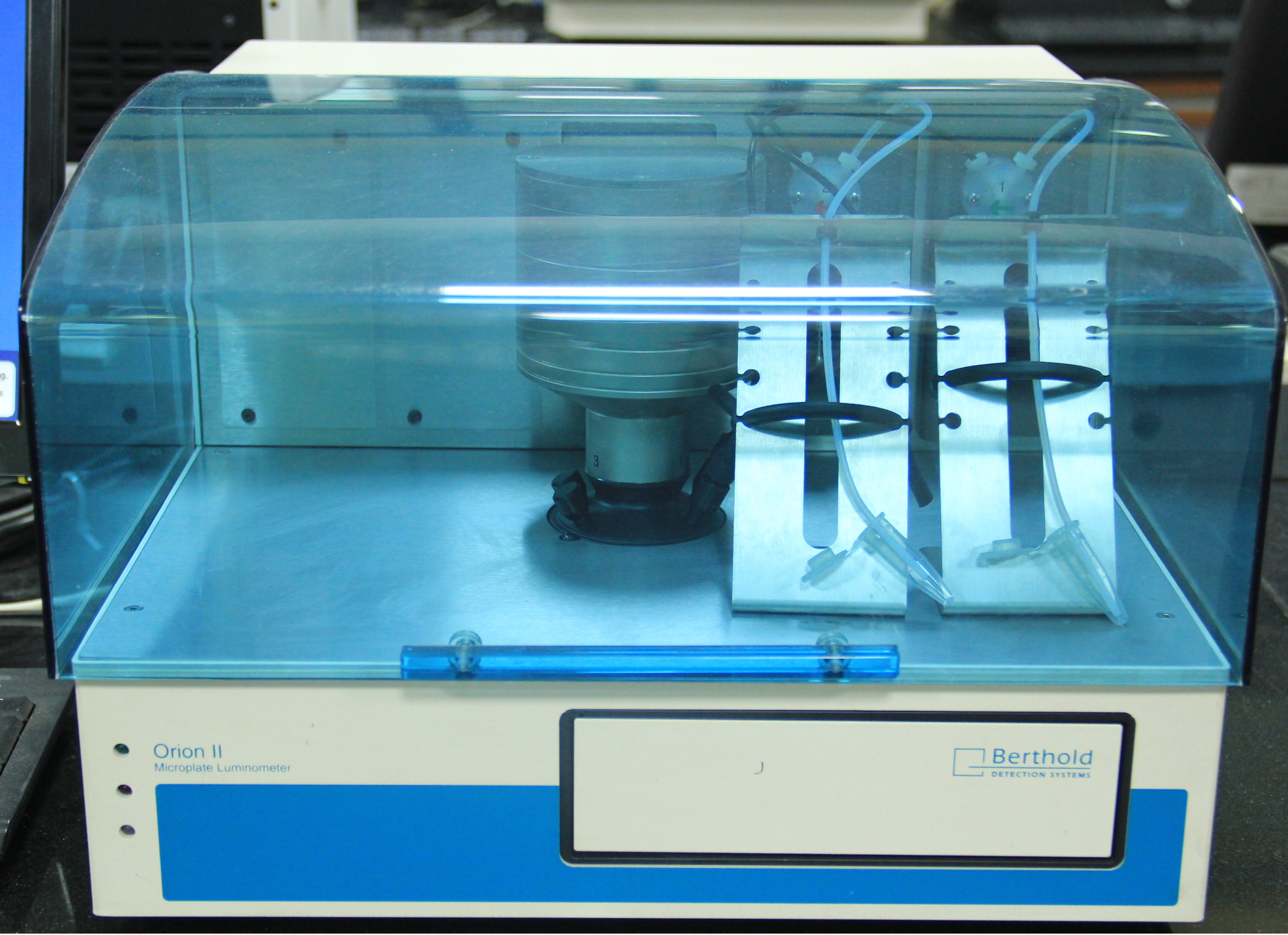Luminometer System

Model: Orion II Microplate Luminometer, Berthold Detection System
Principle
The luminometer works on the principle of spectrophotometry which is associated with the phenomenon of luminescence. A luminescence is the emission of light by certain materials which does not result from heating. A luminometer can detect both chemi- and bioluminescence. Chemiluminescence is the luminescence produced as a result of a chemical reaction e.g. luminol when oxidized with hydrogen peroxide in the presence of a catalyst produces chemiluminescence, while that produced inside living cells/organisms is referred to as bioluminescence.The photomultiplier tube of the instrument can measure light in the visible spectral range between 300 and 600 nm.
Applications
A luminometer can be used to perform:
Reporter gene assays including dual-reporter assays
ATP assays
Kinase activity assays
Cell proliferation, cytotoxicity, and biomass assays
Apoptosis assays
Nucleic acid probe assays
Luminescent immunoassays
Environmental toxicity and mutagenicity assays
| Equipment Details | Price | ||
|---|---|---|---|
| Government Organisation | Non-Government Organisation | ||
| Luminometer System, BDS | Rs.150 | Rs.300 | |
GST: 18% extra on the above charges.
